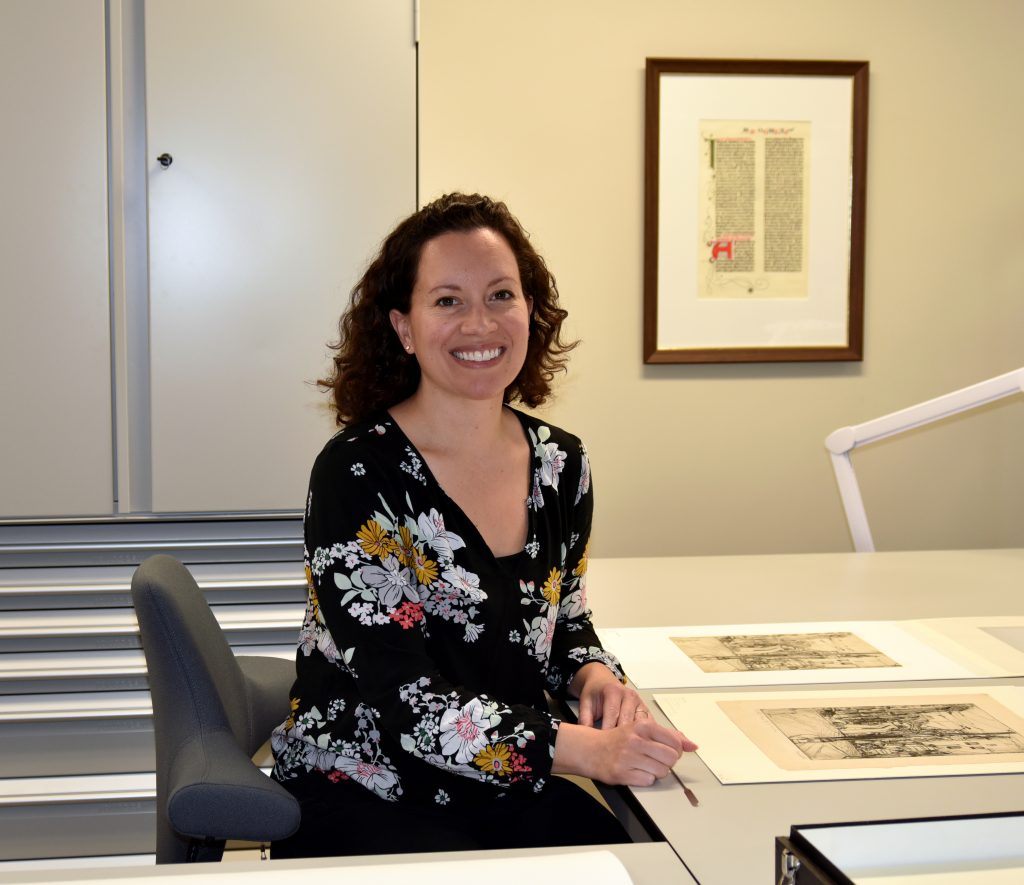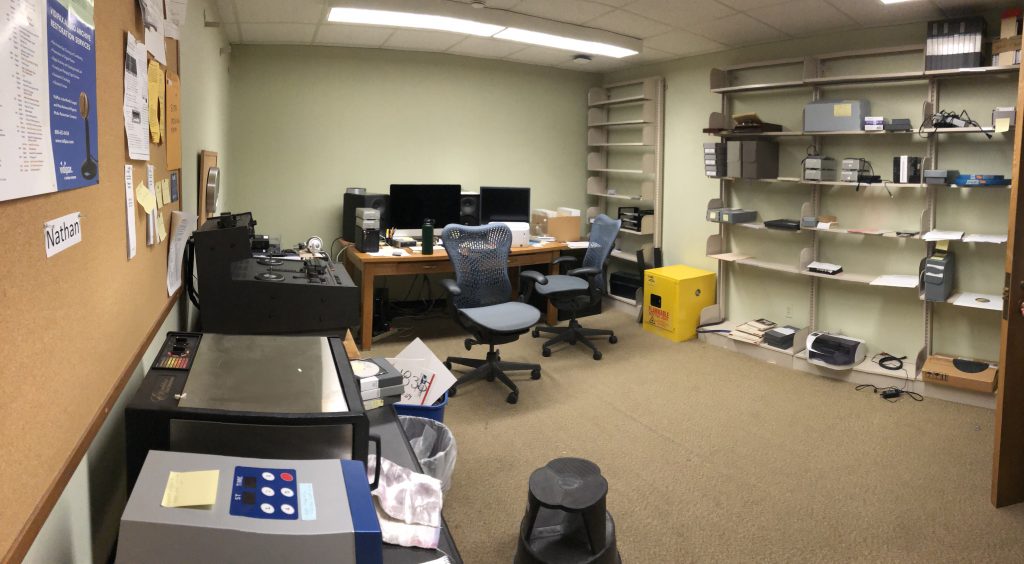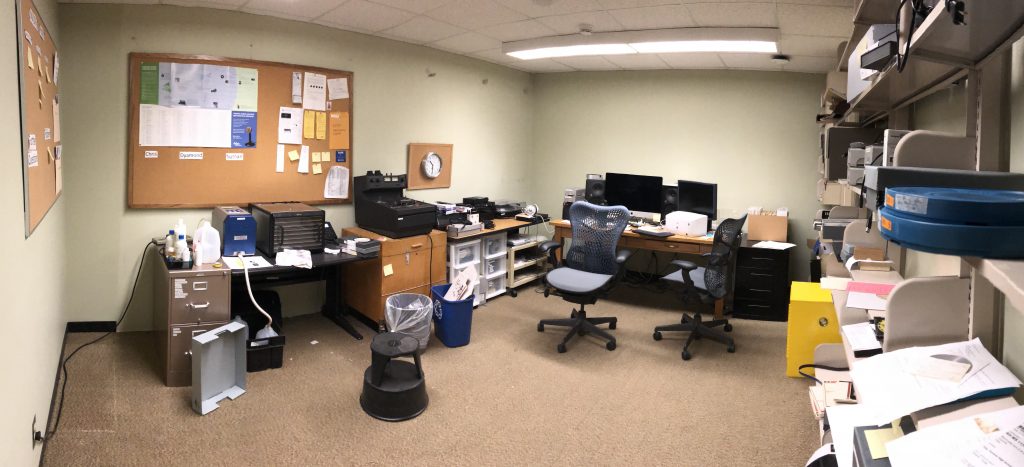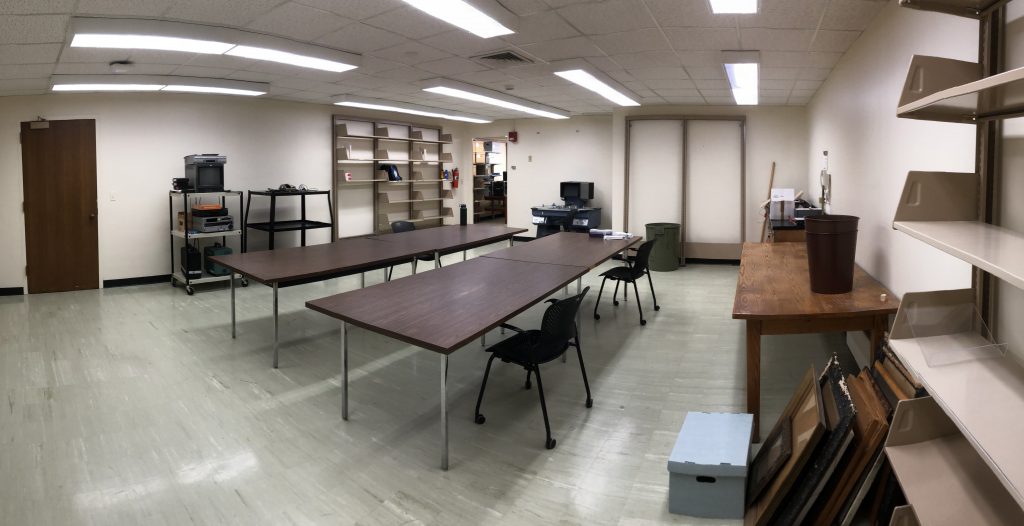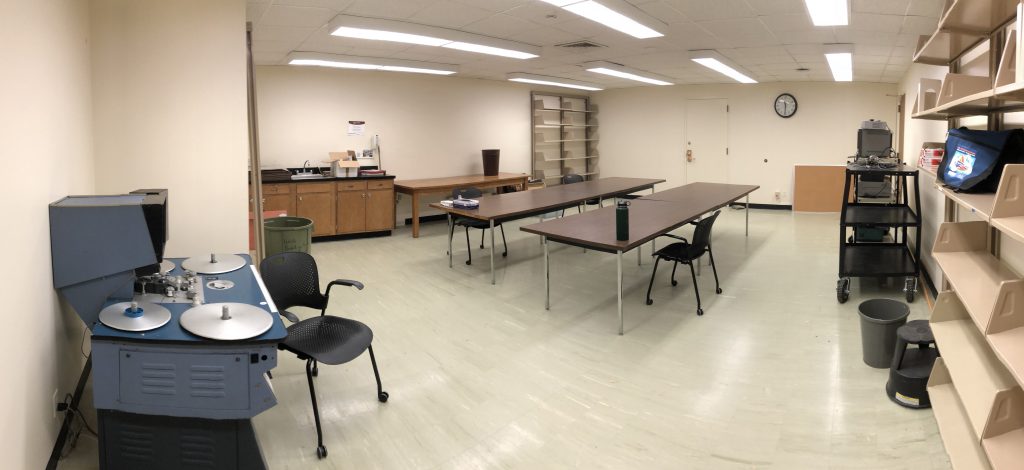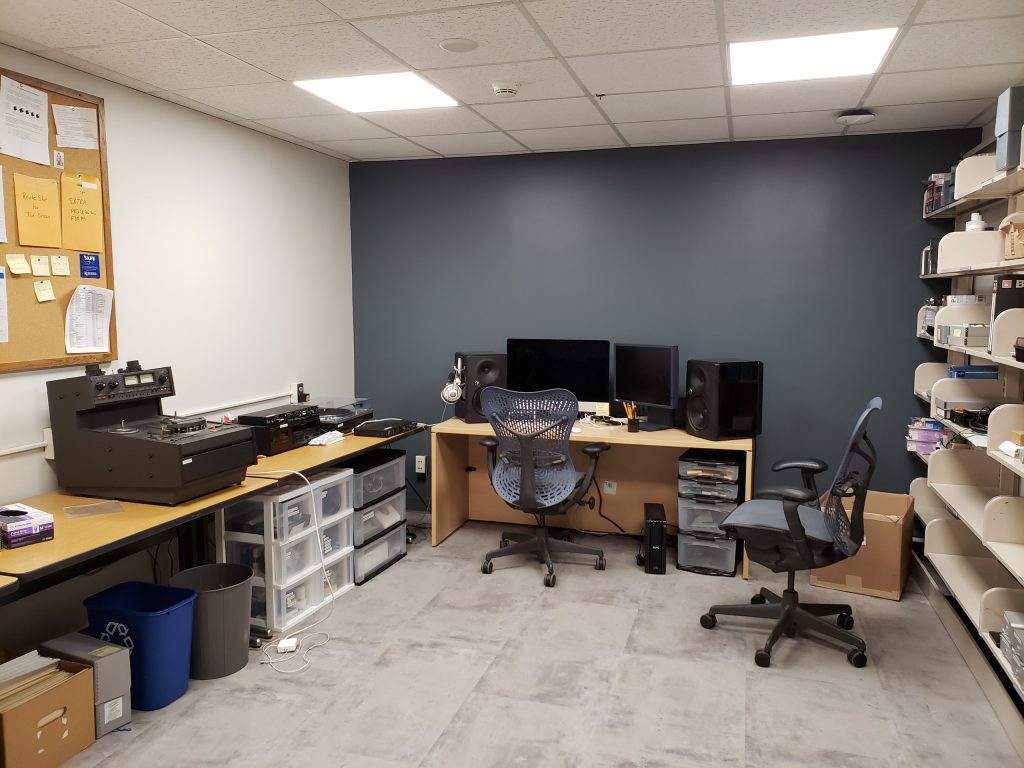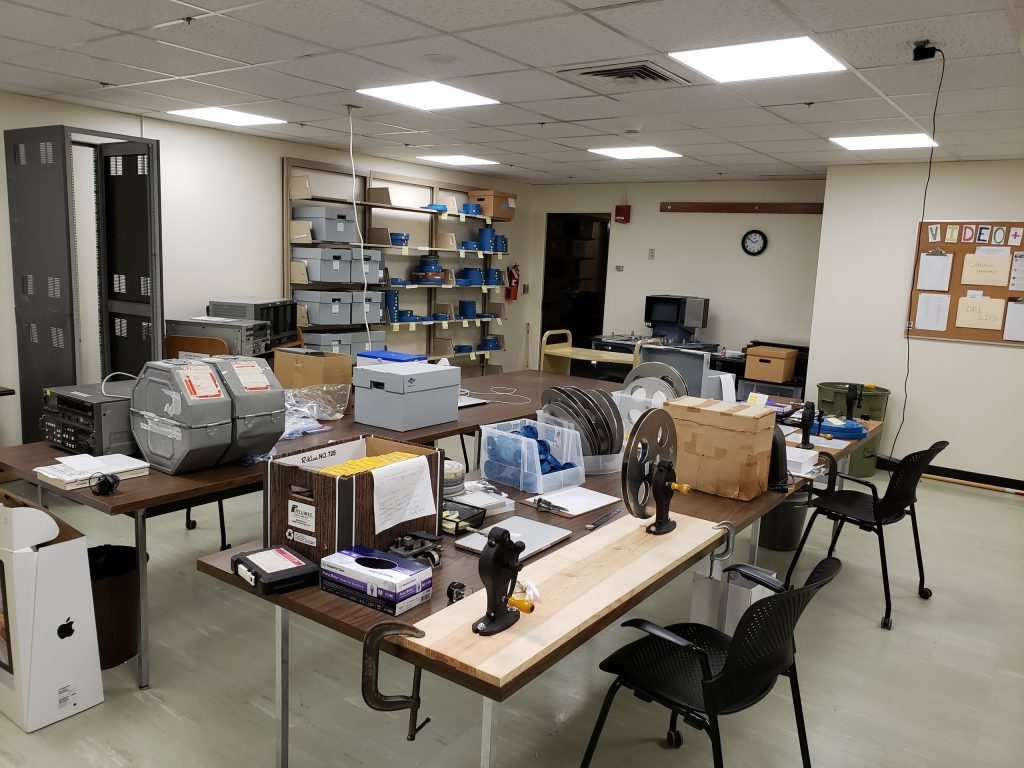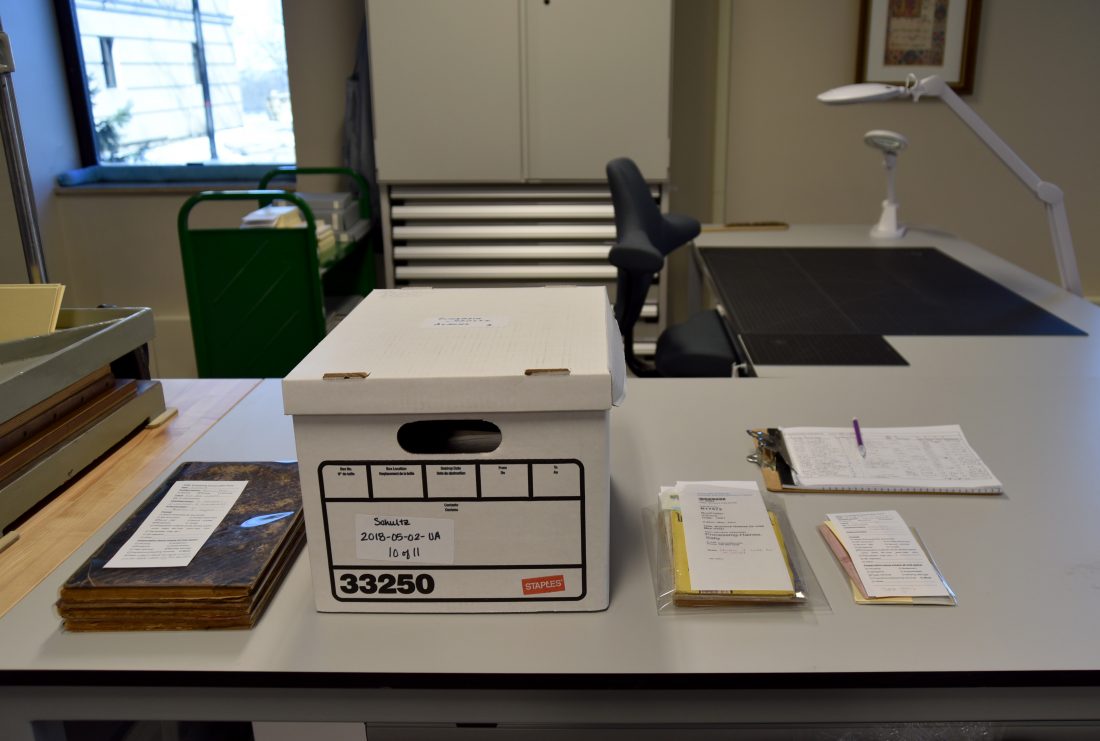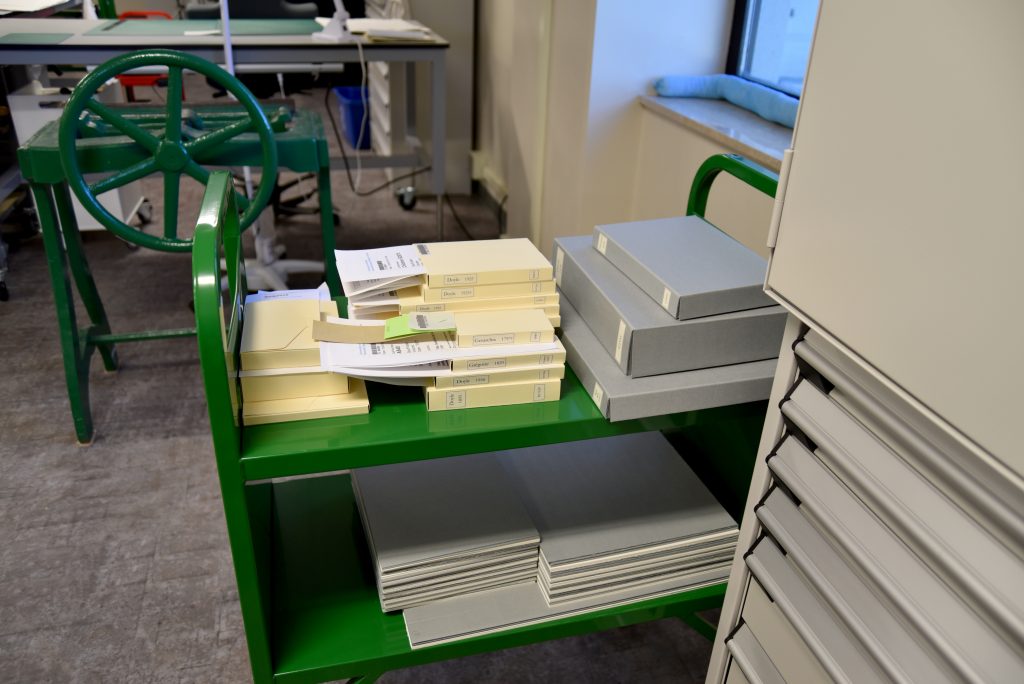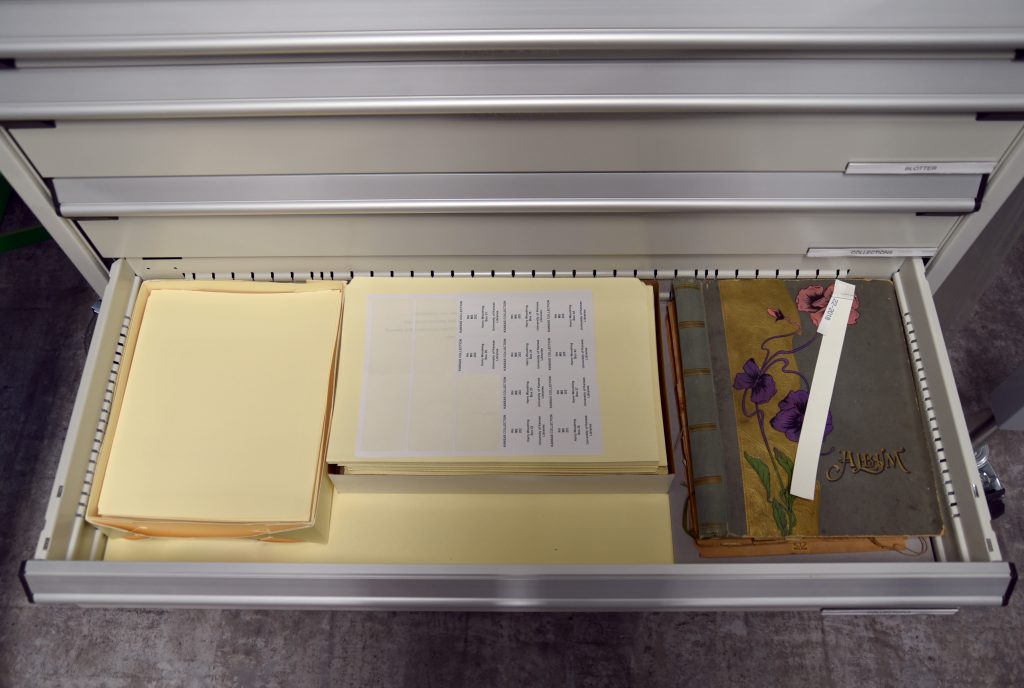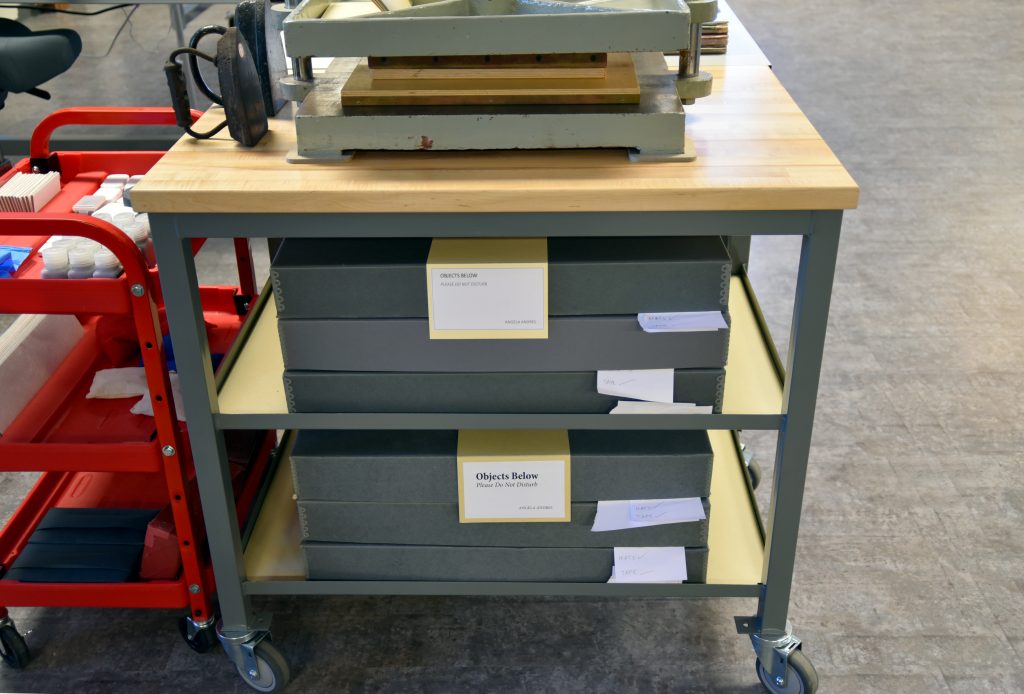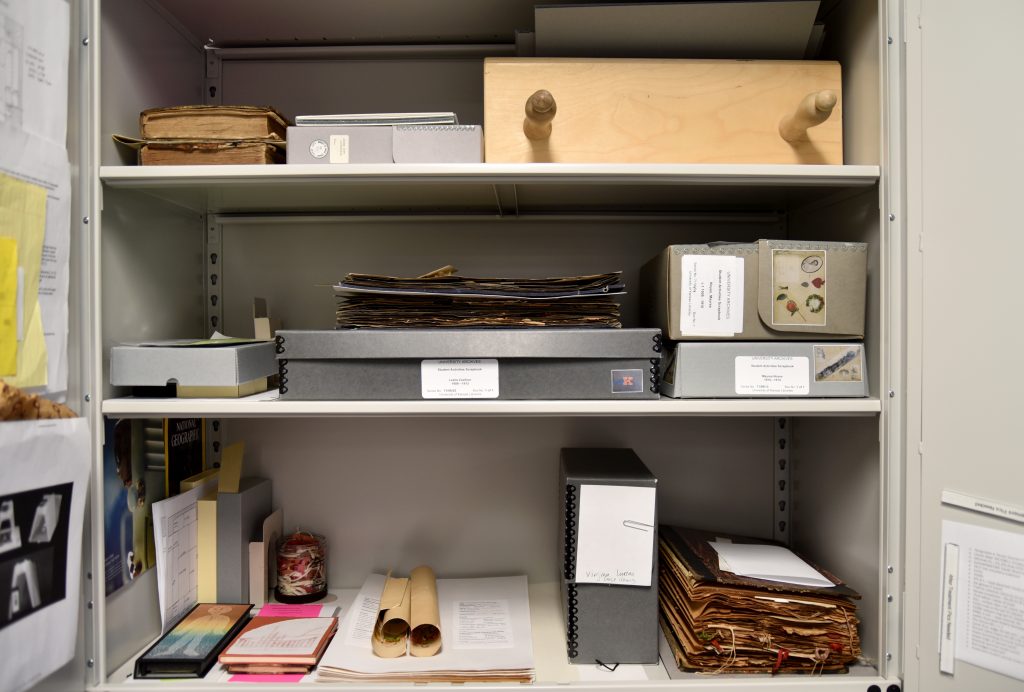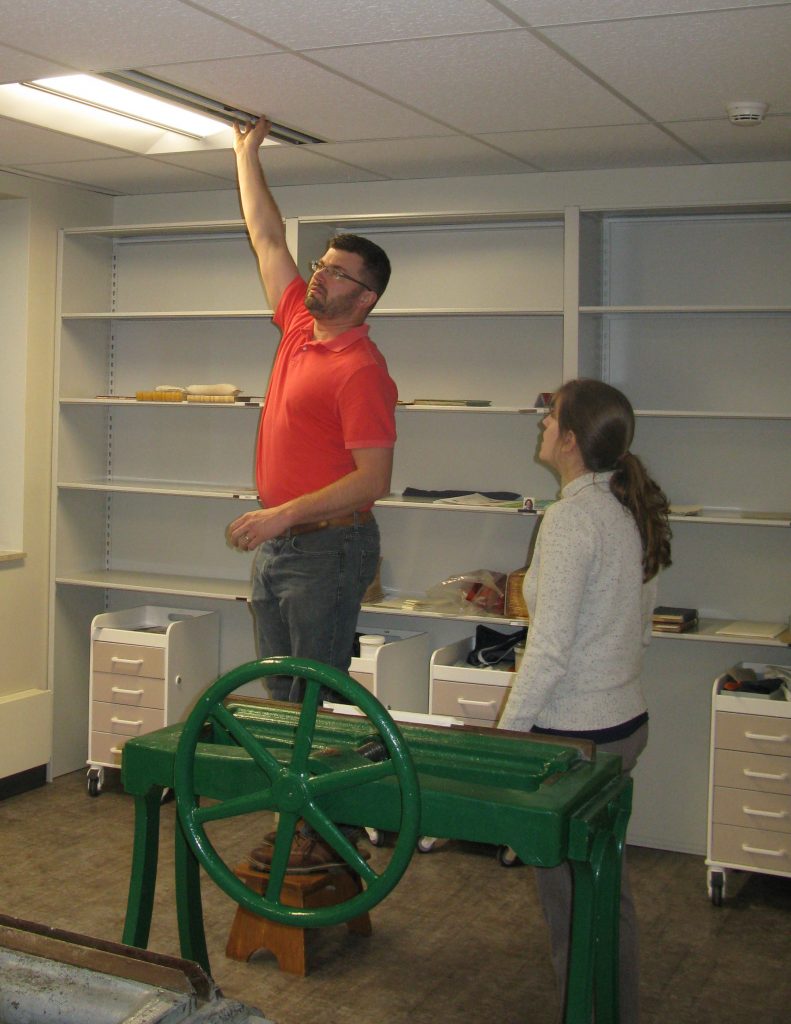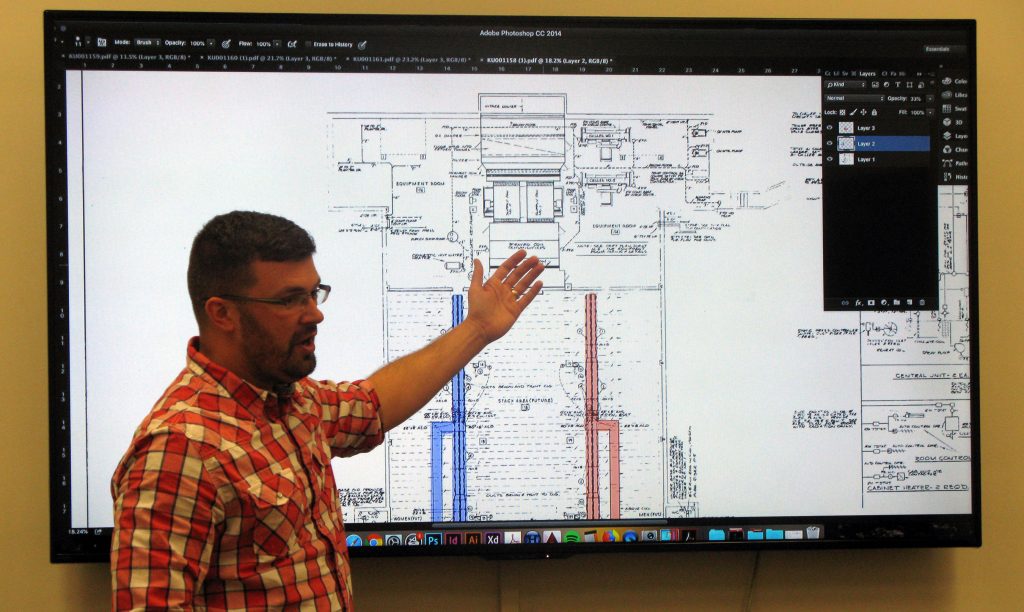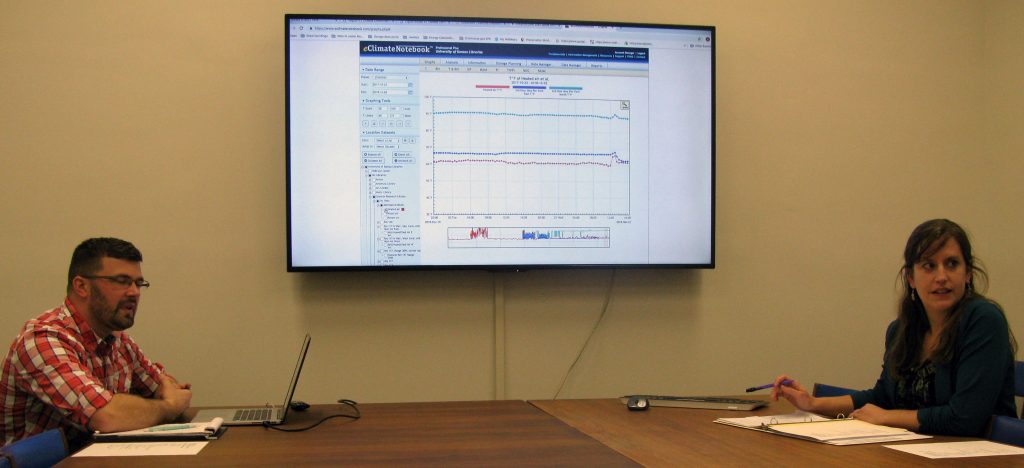Enclosure Engineering: Housing a Japanese Triptych Woodblock Print
May 14th, 2019This week I had the great pleasure of creating a special housing for a new acquisition, a tripartite Japanese woodblock print titled Joreishiki no zu, by the artist Adachi Ginkō. (This item is not yet fully cataloged. Its placeholder record is here; check back for full details soon.) Printed in 1889, this lovely piece depicts beautifully clothed women and girls writing, reading, and storing books, and belongs to a larger series showing fashionable women engaged in other pastimes such as sewing or arranging flowers.

As is often the case, this project began with a discussion between a curator – in this case, Karen Cook – and I about the anticipated use and storage needs of the item. This print is in three separate parts that may once have been joined, but we didn’t feel a particular need to unite them again at this time. This print is likely to be used in classes, which means two things: first, its enclosure needs to do double duty as both a storage container and a display, and second, its container should be compact, not taking up too much valuable space on the classroom table. I suggested a portfolio with a three-hinged lid, not unlike many tablet and mobile device sleeves, that could fold back to elevate the print for viewing. Karen agreed to this approach, so I set out to build some models and puzzle out the details of the structure.
After sketching a few ideas, I started with a tiny model made from scrap board, mainly to work out how the hinges would function. Next I built a scale model using the same materials I intended to use for the real housing. This proved to be a very valuable exercise; some features didn’t work quite as I’d expected, and I observed a couple of possible drawbacks to this design. I enlisted Collections Conservator Roberta Woodrick, who is something of a housing whiz, to offer her suggestions and we came up with a couple of small but significant modifications. Finally, I reviewed the model and modifications with Karen, and at last was ready to build the enclosure.


The finished enclosure is protective, lightweight, and, I hope, will be user-friendly for Spencer staff and researchers. We make a lot of enclosures for many types of library materials here in the lab, and many of those enclosures we know by heart and can turn out quickly. This project illustrates how we can always be rethinking our practice to better serve the collections and users, and how important collaboration is to conservation work.

Angela M. Andres
Assistant Conservator for Special Collections


